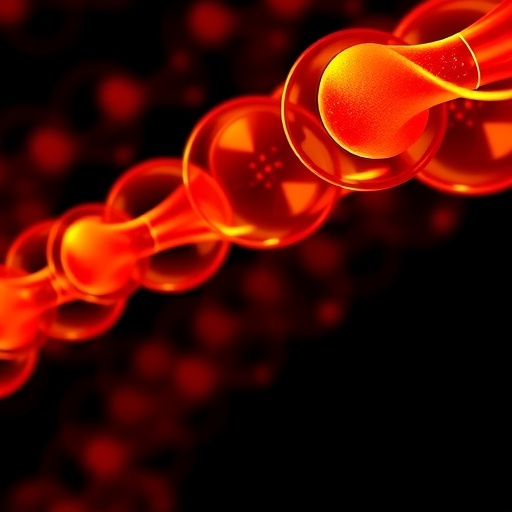In the rapidly evolving landscape of oncology, the integration of precision medicine has revolutionized the approach toward cancer treatment, emphasizing the customization of therapeutic strategies based on individual patient profiles and tumor biology. Among the myriad of pharmacological agents investigated, statins—commonly prescribed to manage hypercholesterolemia—have emerged as intriguing candidates for adjunctive cancer therapy. A recent comprehensive review by Lagunas-Rangel offers a critical examination of the multifaceted roles statins could play in precision cancer medicine, underscoring essential factors that could influence their efficacy and clinical applicability.
Statins are primarily known for their ability to inhibit HMG-CoA reductase, a key enzyme in the mevalonate pathway responsible for cholesterol biosynthesis. This pathway’s dysregulation is not only central to metabolic disorders but also implicated in cancer pathogenesis through the modulation of cell proliferation, apoptosis, and metastasis. Lagunas-Rangel’s analysis delves into how the interference in this pathway by statins extends beyond lipid regulation, illustrating their potential impact on oncogenic signaling networks and tumor microenvironment dynamics.
One of the pivotal considerations highlighted involves the heterogeneity of cancer types and their metabolic dependencies. Statins may yield differential anti-cancer effects based on tumor genotype, phenotype, and microenvironmental context. For instance, tumors with aberrant activation of pathways reliant on prenylated proteins, such as Ras or Rho GTPases, may be more susceptible to the prenylation blockade induced by statins, resulting in impaired tumor growth and survival. This nuanced understanding calls for patient stratification guided by molecular profiling to optimize statin use in cancer therapeutics.
The review also emphasizes the pharmacokinetic and pharmacodynamic complexities when repurposing statins for oncological indications. Factors such as lipophilicity, serum half-life, tissue penetration, and metabolic stability markedly influence the bioavailability of statins in tumor tissues, thereby impacting therapeutic outcomes. Moreover, the intricate interplay between statins and other cancer treatments, including chemotherapy, targeted agents, and immunotherapy, invites careful evaluation to harness potential synergistic effects while mitigating adverse interactions.
Lagunas-Rangel elaborates on the immunomodulatory properties of statins, which could potentiate anti-tumor immune responses. By modulating inflammatory cytokine production and enhancing T-cell activity, statins may contribute to an immunological milieu unfavorable for tumor progression. Such effects present promising avenues for integrating statins into combination regimens aiming to amplify the efficacy of immune checkpoint inhibitors and other immunotherapeutic strategies.
Importantly, the review addresses the dosage and timing considerations vital for translating preclinical statin benefits into clinical success. While high doses may exert pronounced anti-cancer effects, they also raise the risk of toxicity and off-target effects, necessitating delicate balancing through rigorously designed clinical trials. Additionally, the temporal context of statin administration—whether as a preventive measure, during active treatment, or in the adjuvant setting—requires further elucidation to maximize positive therapeutic indices.
Genetic polymorphisms affecting statin metabolism and transport represent another layer of complexity in precision oncology. Variability in genes encoding cytochrome P450 enzymes and drug transporters can influence drug levels and response rates, reinforcing the need for pharmacogenomic assessment as part of personalized treatment planning. Incorporating such insights could mitigate interpatient variability and identify populations most likely to benefit from statin therapy.
Furthermore, Lagunas-Rangel’s review synthesizes evidence from epidemiological studies indicating an association between statin use and reduced cancer incidence or mortality in specific cohorts. However, the data remain inconclusive, often confounded by comorbidities, lifestyle factors, and study design limitations. This reinforces the necessity for well-controlled, prospective clinical trials explicitly targeting cancer outcomes with statins, guided by molecular biomarkers and patient selection heuristics.
One critical challenge underlined in the article is the need to unravel the mechanistic underpinnings of statin-induced anti-cancer effects in various tumor models. While apoptosis induction and cell cycle arrest are documented effects, emerging research points toward statin impact on cancer stem cell populations, angiogenesis inhibition, and modulation of tumor metabolism. Comprehensive molecular characterizations will be integral to clarifying these mechanisms and leveraging them therapeutically.
Additionally, the potential repurposing of statins invites economic and accessibility considerations. Given that statins are widely available and generally cost-effective, their adaptation for cancer treatment could alleviate financial barriers associated with novel oncology drugs, increasing treatment equity. However, this optimistic outlook hinges on rigorous validation of clinical benefits to substantiate inclusion in standard cancer care protocols.
Lagunas-Rangel’s examination also navigates the terrain of statin-related adverse effects, such as myopathy, hepatotoxicity, and glucose metabolism disturbances, which could complicate cancer therapy, particularly in patients with existing comorbidities or those receiving polypharmacy. The balance between maximizing anti-cancer efficacy and minimizing toxicities underscores the importance of vigilant monitoring and individualized dose adjustments in precision medicine frameworks.
The article further advocates for multidisciplinary collaborations encompassing oncologists, pharmacologists, molecular biologists, and bioinformaticians to decipher complex datasets and develop predictive models for statin responsiveness. Integrating high-throughput omics data with clinical parameters could pave the way for robust decision support systems, facilitating the rational incorporation of statins into personalized cancer treatment algorithms.
Finally, the review calls attention to future avenues including the design of novel statin derivatives or combination therapies engineered to enhance tumor-targeting capabilities while circumventing resistance mechanisms. Nanotechnology-based delivery systems and molecular conjugates hold promise for amplifying therapeutic indices and expanding the applicability of statins across diverse cancer subtypes.
In conclusion, the comprehensive review by Lagunas-Rangel articulates a compelling narrative positioning statins as potentially valuable components in the armamentarium of precision cancer medicine. By dissecting the biochemical, clinical, and pharmacological dimensions that modulate statin efficacy in oncology, the article lays the groundwork for informed clinical trial design and translational research endeavors. As the oncology community continues to embrace personalized approaches, understanding and harnessing the multifaceted roles of statins could significantly influence future cancer management paradigms.
Subject of Research: The role and implications of statins in precision cancer medicine, focusing on their biochemical mechanisms, clinical potential, and pharmacological considerations.
Article Title: Statins in the context of precision cancer medicine: important factors to consider.
Article References:
Lagunas-Rangel, F.A. Statins in the context of precision cancer medicine: important factors to consider. Med Oncol 42, 537 (2025). https://doi.org/10.1007/s12032-025-03101-9
Image Credits: AI Generated




